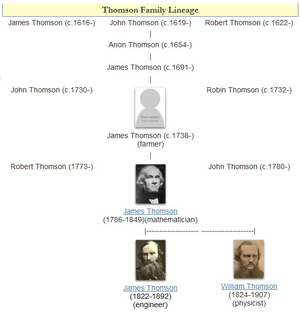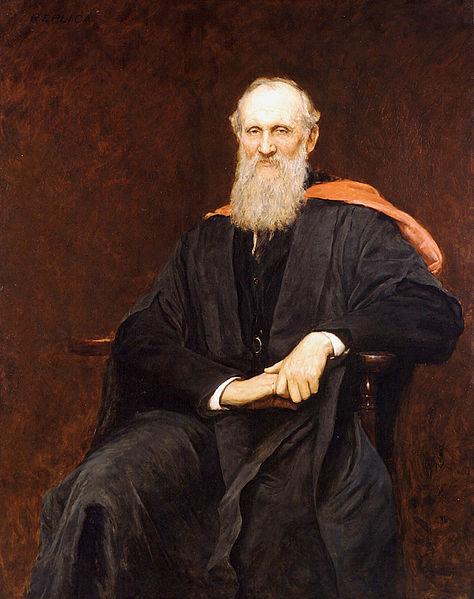
Федеральное агентство по образованию Российской Федерации
Государственное образовательное учреждение высшего профессионального образования
«Южно-Уральский государственный университет»
Факультет « Энергетический »
Кафедра « Системы Электроснабжения »
Величайшие физики
РЕФЕРАТ
по дисциплине (специализации) «Английский язык»
Проверила
Бояльская Татьяна Александровна
2011 г.
Автор работы
студент группы Э-125
Сухов Максим Юрьевич
2011 г.
Реферат защищен
с оценкой
___________________________
_____________________2011 г.
Челябинск 2011
William Thomson
William Thomson, 1st Baron Kelvin (26 June 1824 – 17 December 1907) was a mathematical physicist and engineer. At the University of Glasgow he did important work in the mathematical analysis of electricity and formulation of the first and second laws of thermodynamics, and did much to unify the emerging discipline of physics in its modern form. He worked closely with mathematics professor Hugh Blackburn in his work. He also had a career as an electric telegraph engineer and inventor, which propelled him into the public eye and ensured his wealth, fame and honor. For his work on the transatlantic telegraph project he was knighted by Queen Victoria, becoming Sir William Thomson. He had extensive maritime interests and was most noted for his work on the mariner's compass, which had previously been limited in reliability.
Lord Kelvin is widely known for realising that there was a lower limit to temperature, absolute zero; absolute temperatures are stated in units of kelvin in his honour. On his ennoblement in honour of his achievements in thermodynamics, and of his opposition to Irish Home Rule,[2][3][4] he adopted the title Baron Kelvin of Largs and is therefore often described as Lord Kelvin. He was the first UK scientist to be elevated to the House of Lords. The title refers to the River Kelvin, which flows close by his laboratory at the University of Glasgow. His home was the imposing red sandstone mansion Netherhall, in Largs on the Firth of Clyde. Despite offers of elevated posts from several world renowned universities Lord Kelvin refused to leave Glasgow, remaining Professor of Natural Philosophy for over 50 years, until his eventual retirement from that post. The Hunterian Museum at the University of Glasgow has a permanent exhibition on the work of Lord Kelvin including many of his original papers, instruments and other artifacts.
Family


![]()
Thomson family tree: James Thomson (mathematician), James Thomson (engineer), and William Thomson, were all professors at Glasgow University; the later two, through their association with William Rankine, another Glasgow professor, worked to form one of the founding schools thermodynamics.[5]
William Thomson's father, James Thomson, was a teacher of mathematics and engineering at Royal Belfast Academical Institution and the son of a farmer. James Thomson married Margaret Gardner in 1817 and, of their children, four boys and two girls survived infancy. Margaret Thomson died in 1830 when William was six years old.[6]
William and his elder brother James were tutored at home by their father while the younger boys were tutored by their elder sisters. James was intended to benefit from the major share of his father's encouragement, affection and financial support and was prepared for a career in engineering.
In 1832, his father was appointed professor of mathematics at Glasgow and the family moved there in October 1833. The Thomson children were introduced to a broader cosmopolitan experience than their father's rural upbringing, spending mid-1839 in London and, the boys, being tutored in French in Paris. Mid-1840 was spent in Germany and the Netherlands. Language study was given a high priority.
Youth
Thomson had heart problems and nearly died when he was 9 years old. He attended the Royal Belfast Academical Institution, where his father was a professor in the university department, before beginning study at Glasgow University in 1834 at the age of 10, not out of any precociousness; the University provided many of the facilities of an elementary school for able pupils, and this was a typical starting age.
In school, Thomson showed a keen interest in the classics along with his natural interest in the sciences. At the age of 12 he won a prize for translating Lucian of Samosata's Dialogues of the Gods from Latin to English.
In the academic year 1839/1840, Thomson won the class prize in astronomy for his Essay on the figure of the Earth which showed an early facility for mathematical analysis and creativity. Throughout his life, he would work on the problems raised in the essay as a coping strategy at times of personal stress. On the title page of this essay Thomson wrote the following lines from Alexander Pope's Essay on Man. These lines inspired Thomson to understand the natural world using the power and method of science:
Go, wondrous creature! mount where Science guides; Go measure earth, weigh air, and state the tides; Instruct the planets in what orbs to run, Correct old Time, and regulate the sun;
Thomson became intrigued with Fourier's Théorie analytique de la chaleur and committed himself to study the "Continental" mathematics resisted by a British establishment still working in the shadow of Sir Isaac Newton. Unsurprisingly, Fourier's work had been attacked by domestic mathematicians, Philip Kelland authoring a critical book. The book motivated Thomson to write his first published scientific paper[7] under the pseudonym P.Q.R., defending Fourier, and submitted to the Cambridge Mathematical Journal by his father. A second P.Q.R paper followed almost immediately.[8]
While holidaying with his family in Lamlash in 1841, he wrote a third, more substantial, P.Q.R. paper On the uniform motion of heat in homogeneous solid bodies, and its connection with the mathematical theory of electricity.[9] In the paper he made remarkable connections between the mathematical theories of heat conduction and electrostatics, an analogy that James Clerk Maxwell was ultimately to describe as one of the most valuable science-forming ideas.[10]
